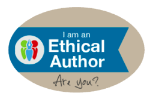






.jpg)

I’ve talked about pet hates for book covers so in reverse I am going to give you some top tips for creating a good book cover. Knowing and understanding the constituent parts of a book cover can help you make the best marketing decisions when you design or commission your own. Despite the popular saying of never judge a book by its cover, when it comes to readers it is actually the cover they will use to judge the contents of any book. And that includes yours. It could make the difference between the reader walking (or scrolling) past it — or choosing to buy it.
Remember, you want to design your book cover not just to attract readers, but to make sure you are attracting the right kind of readers. Today’s podcast will briefly take you through the anatomy of a book cover. Our hope is it will help you build yours from the ground up so that it’s optimised to sell well.
Let’s start with Cover Imagery
Whether you use an edited stock image, an illustration, or bespoke photography, imagery is your cover’s starting point. It affects all future decisions — such as text positioning. And, since your cover will be displayed as thumbnails in online stores, the clarity and impact of the cover image are crucial.
For example, the cover for Sing Me to Sleep by Angela Morrison is based on a Shutterstock image of two hands, which has been manipulated, edited, and layered with other elements by a designer to have the desired effect. The image of the two hands works for Sing Me to Sleep as it hints at the tentative relationships that the main character Beth makes, and represents the emotion-
A cover image, if effective, will:
1. Indicate what genre the author is operating in,
2. Provide hints as to the contents of the book, and
3. Compel people to read it.
A picture does indeed tell a thousand words. In this case, it needs to tell (or indeed sell) all the thousands of words within the novel.
Typography
When handling the words on a cover, it’s important to think in terms of visual hierarchy. In other words, how are you going to arrange the title, the author’s name, and if applicable, the subtitle — paying close attention to the relative size of each element?
For example, with the cover design for Stephen King’s End of Watch, there is a minimal but dramatic image with the author’s name much larger than the title. King’s name is the central selling point, so it stands to reason that it’s at the top of the visual hierarchy. Equally, if you are a first-
Font choice is also extremely important and should have almost as much consideration as the book title itself. A swirly, stylish font might suit a romance novel but would look out of place on the front of say a thriller, or a non-
The Spine
Often treated as an afterthought, the spine is a kind of concentrated book cover. In physical bookstores, there isn’t space for all the books to be stored cover-
Typically, the spine will show the book’s title, the author’s name, and possibly an extension of the front cover image, or at the very least the background style. You can certainly become inventive with this. Some covers have images that wrap right around the spine and into the back cover. Whilst it’s only a small bit of the book cover, the spine is definitely not something you should overlook.
Back Cover
The back cover can be classed as the second line of marketing — if the front cover hooks them in, then it is the back cover that has to close the sale.
Practically, the back cover of fiction books tends to include a tagline (also known as a logline or the shout line), a blurb, possibly a brief author bio, a barcode, and an ISBN. Non-
Gail Honeyman’s -
Having listened to these simple ideas the question is what will you do?
How will you combine all these elements to make the perfect book cover? Remember, your book cover is your product packaging. It’s also the branding for your book, and you as an author. A professional book cover makes readers take you seriously as an author, as well as attracting the right readers to the story that you’ve worked so hard on producing.
I have seen many ‘homemade/designed’ covers that readers find off-